It’s my pleasure to introduce an excellent astrophotographer and also a friend of mine – Maicon Germiniani to everybody. Maicon lives in Brazil, he and I talked a lot via emails. He uses our ASI1600MM-Cool and ASI183MM Pro cameras to do deep sky imaging for years. I am surprised by his beautiful images which have nice details, vivid color and sharp stars. He is very professional, and working hard in DSO imaging.
 Maicon Germiniani and his favorite equipments
Maicon Germiniani and his favorite equipments
Maicon’s major equipments:
Telescope: TS 115/800 Triplet APO refractor
Mount: Skywatcher AZEQ5
Main Camera: ASI183MM Pro, ASI1600MM-C
Accessories: OAG (off axis guider), ZWO EFW 8 x 1.25 (LRGB HSO filters), Field Flattener TS0.79, and so on…
His telescope is not big, that’s why I’m so surprised . In the first time, I thought it was taken by a 6 inch refractor, but it’s not! Please take a look at the wonderful images below!
NGC253 The Sculptor Galaxy
 Total exposure 5.0 hours, TS115APO+ASI1600MM-C, LRGB combination.
Total exposure 5.0 hours, TS115APO+ASI1600MM-C, LRGB combination.
Maicon shot many great images, we collect his images and build a gallery on our website to share his excellent work.
You can see his gallery : Famous Astrophotographer Gallery
https://astronomy-imaging-camera.com/gallery/
Maicon likes to share his images on Astrobin and Facebook too. You can follow him and take a look of his latest work.
https://www.astrobin.com/users/GerminianiMaicon/
In the last week, I made an interview with Maicon and asked him some questions, I bet you must be curious of his story. Let’s take a look at what he said and enjoy his great images together!
Q1: Hi, Maicon. Could you introduce yourself for everyone? May I ask when did you start love astronomy and how long did you working on astrophotography?
Maicon: My name is Maicon Germiniani, I’m 34 years old and I always liked Astronomy,As a child I wanted to be an astronaut, I did not follow this career, I found in astrophotography a means of approaching the universe. In the year 2014 I bought my first telescope. My first image was of the Omega centaur stellar cluster on the day August 25, 2015. The words I used to describe that moment: “Today I am realizing a dream. My first record of deep sky.” As you see, my passion for astrophotography has only increased over the years.
Omega Centauri NGC 5139 (new image, token in 2017)
 Astrobin Image of the day 07/05/2017, Total exposure 0.5 hours, TS115APO+ASI1600MM-C, LRGB combination.
Astrobin Image of the day 07/05/2017, Total exposure 0.5 hours, TS115APO+ASI1600MM-C, LRGB combination.
Q2: Why do you choose deep sky imaging?
Maicon: I chose DeepSky for the beauty I saw in these pictures. Always looking for records of other astrophotographers and I was enchanted by the beauty of the images. Another contributing factor was the purchase of my first telescope, a Doublet of 80mm. It was a great equipament for DeepSky.
Andromeda Messier 31
 Total exposure 14.3 hours, TS115APO+ASI1600MM-C, LRGB combination.
Total exposure 14.3 hours, TS115APO+ASI1600MM-C, LRGB combination.
Q3: Do you have any other interested field besides deep sky imaging?
Maicon: Everything related to the cosmos fascinates me. I read everything I find on this subject. As for photography, I plan to build a fixed observatory later this year, and equip it with Setups that serve for DeepSky and planetary images.
Corona Australis NGC 6729
 Total exposure 6.2 hours, TS115APO+ASI1600MM-C, LRGB combination.
Total exposure 6.2 hours, TS115APO+ASI1600MM-C, LRGB combination.
Q4: Why do you choose refractor telescope as main imaging telescope? Have you ever considered to try other telescopes, such as Newtonian, RC?
Maicon: I opted for the refractor telescope for ease of use. They are telescopes that maintenance. Since I still do not have a fixed observatory, I have to disassemble the setup to each photo section, which would make the use of refracting or RC telescopes a little complicated for me. But as I mentioned, from the moment the observatory is ready, one of the priorities is to work with a RC system in conjunction with the Refractor I use today.
 Total exposure 5 hours, TS115APO, Ha(ASI1600MM-C) + RGB(DSLR)
Total exposure 5 hours, TS115APO, Ha(ASI1600MM-C) + RGB(DSLR)Q5: What is your ‘often-go’ place for photography? Backyard or remote observatory?
Maicon: My dad has a backyard surrounded by a high wall. Much of the Luminous pollution is below of the wall, which allows me, even being in the city, a spectacular sky for photography. It is worth mentioning that I live in a city with just over 2500 inhabitants. Yes, 2500 !!! I leave my setup at his house, which is just over 200 meters from my house, and I photograph whenever possible. I enjoy watching the photography session next to the telescope, while I contemplate the sky.
Messier 17 Omega Swan Nebula
 Total exposure 5.5 hours, TS115APO+ASI1600MM-C, HA+LRGB combination.
Total exposure 5.5 hours, TS115APO+ASI1600MM-C, HA+LRGB combination.
Q6: How many cameras did you use? And could you tell us your impressions about those cameras?
Maicon: When I started, I used a modified Canon 450D camera for astrophotography. I got good results with it but I always wanted to have a CCD or CMOS camera to complete my setup. When I saw the pre-launch of the ASI 1600 (version 1) I had no doubts. I ordered soon mine. Once I first used it, I made sure that my images would have a huge leap in quality. At the end of 2017 I received the news of the launch of ZWO ASI 183MM PRO and realized that it would be the ideal complement for my setup.
NGC 6559 Loreta Nebula
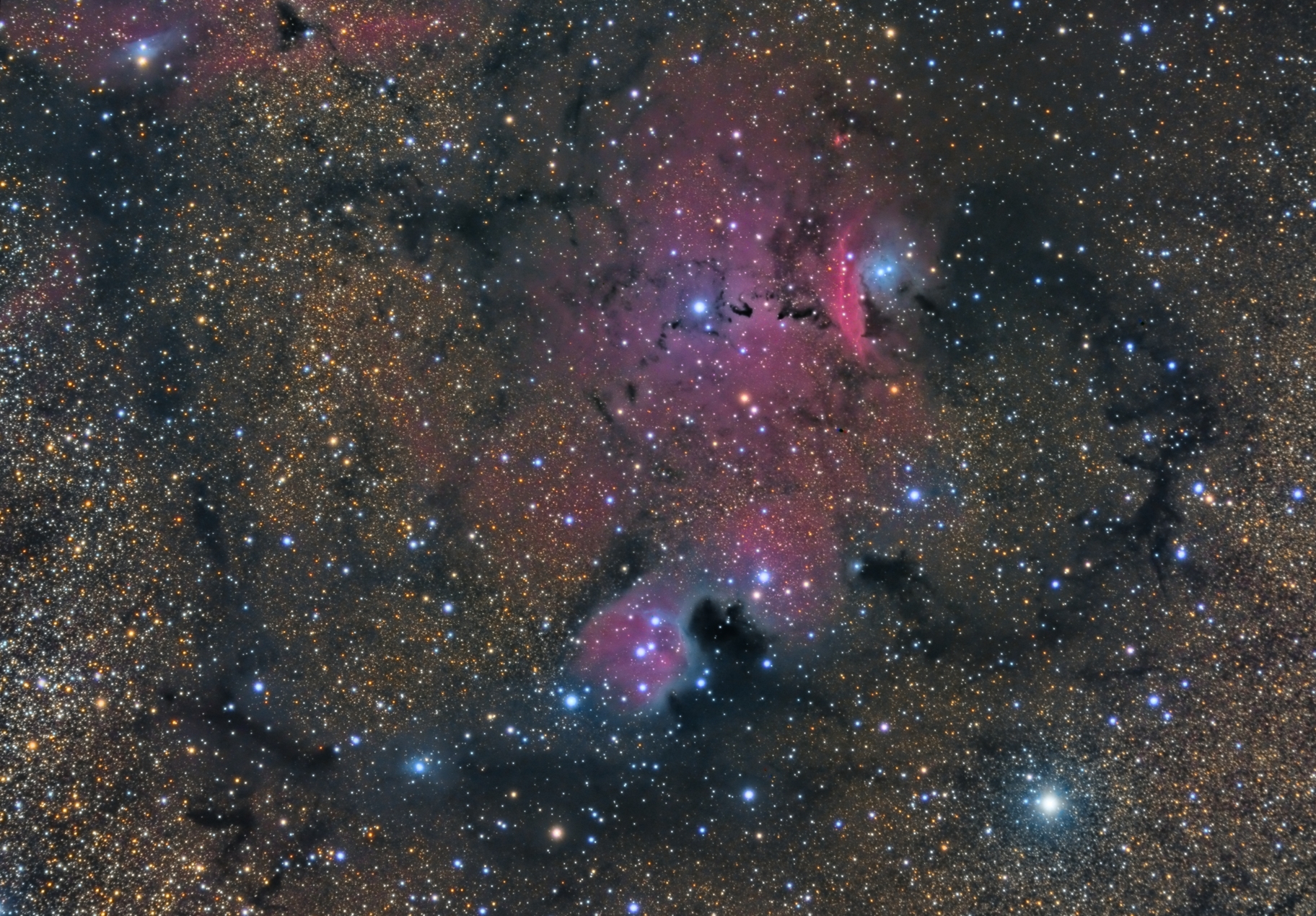 Total exposure 2.5 hours, TS115APO+ASI1600MM-C, LRGB combination.
Total exposure 2.5 hours, TS115APO+ASI1600MM-C, LRGB combination.
Q7: About our 183 camera, what impressed you most?
Maicon: My experience with ASI 183MM PRO is being rewarding. The few pictures I made with her have gained prominence in several sites that share my images. The idea I have is to use this camera for smaller objects, such as galaxies and planetary nebulae, in conjunction with my telescope, TS115 / 800 I’m sure I will have excellent results. What struck me most about this camera is the resolution. I’m still testing it for catches with short exposures, and the results are surprising.
NGC 6334 Cats Paw Nebula
 Total exposure 12.0 hours, TS115APO+ASI1600MM-C, HA+LRGB combination.
Total exposure 12.0 hours, TS115APO+ASI1600MM-C, HA+LRGB combination.Q8: What capture software and process software do you use now?
Maicon: Telescope APO Tripleto TS 115/800, OAG (off axis guider) ZWO FILTER WHEEL 8 x 1.25 (LRGB HSO), Field Flattener TS0.79. I currently use MaximDl for Capture, PHD Guiding for Guidance, PixInsight and Photoshop CS6 for editing my images.
Messier 8 Lagoon Nebula
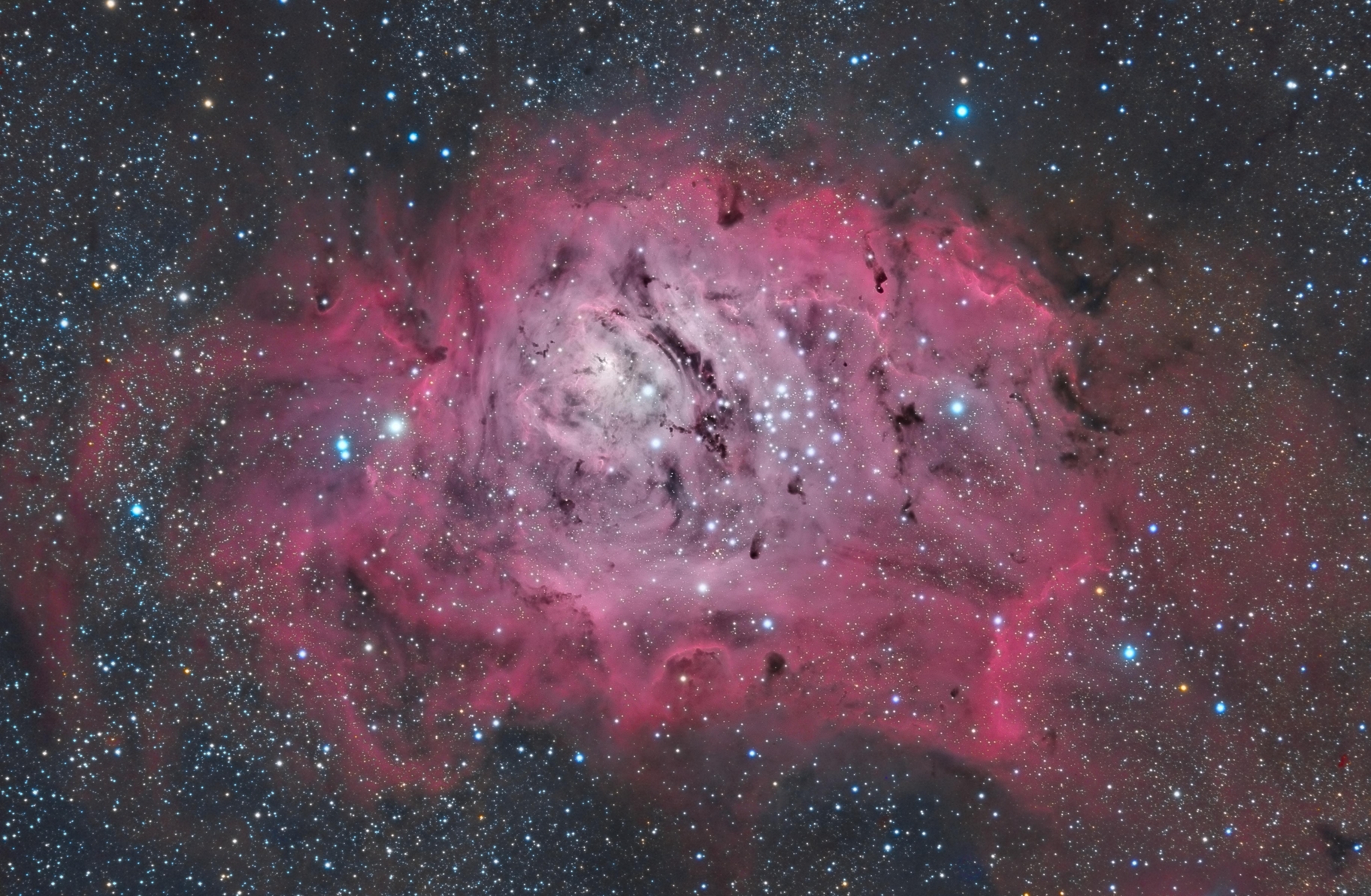 Total exposure 8.0 hours, TS115APO+ASI1600MM-C, HA+LRGB combination.
Total exposure 8.0 hours, TS115APO+ASI1600MM-C, HA+LRGB combination.
Q9: Do you think calibration and preprocessing is very hard for CMOS cooled camera?
Maicon: One problem usually associated with CMOS cameras is the famous AMP GLOW. I always talk to my friends which I do not consider a problem, but a characteristic of this technology. With the calibration frames this is easily solved.
NGC 2244 Rosette Nebula
 Total exposure 2.7 hours, TS115APO+ASI1600MM-C, HSO combination.
Total exposure 2.7 hours, TS115APO+ASI1600MM-C, HSO combination.
Q10: Do you expect bigger mono CMOS camera to be available on the market? such as APS-C or Full-frame mono camera?
Maicon: Cameras CMOS with APS-C and Full-frame sensors can be a major advance in this market, the main The advantage of CMOS cameras is the lower cost of purchasing these products. CCDs with large sensors usually cost many times more, which makes the market a bit restrictive.
NGC 3532 Football Cluster Wishing Well Cluster
 Total exposure 3.2 hours, TS115APO+ASI183MM Pro, Ha+GB combination.
Total exposure 3.2 hours, TS115APO+ASI183MM Pro, Ha+GB combination.
Q11: Do you think CMOS cameras will replace CCD cameras in the further?
Maicon: I do not know if they will replace, but the technological advance in this area has been remarkable in recent years. ASI ZWO has taken a large share of this market due to the quality of the products presented and since then I see an invasion of CMOS cameras in astrophotography. I consider ZWO ASI 1600 a pioneer in this area, the results which some astrophotographers achieve with it rivals the best CCDs on the market.
Great Carina Nebula
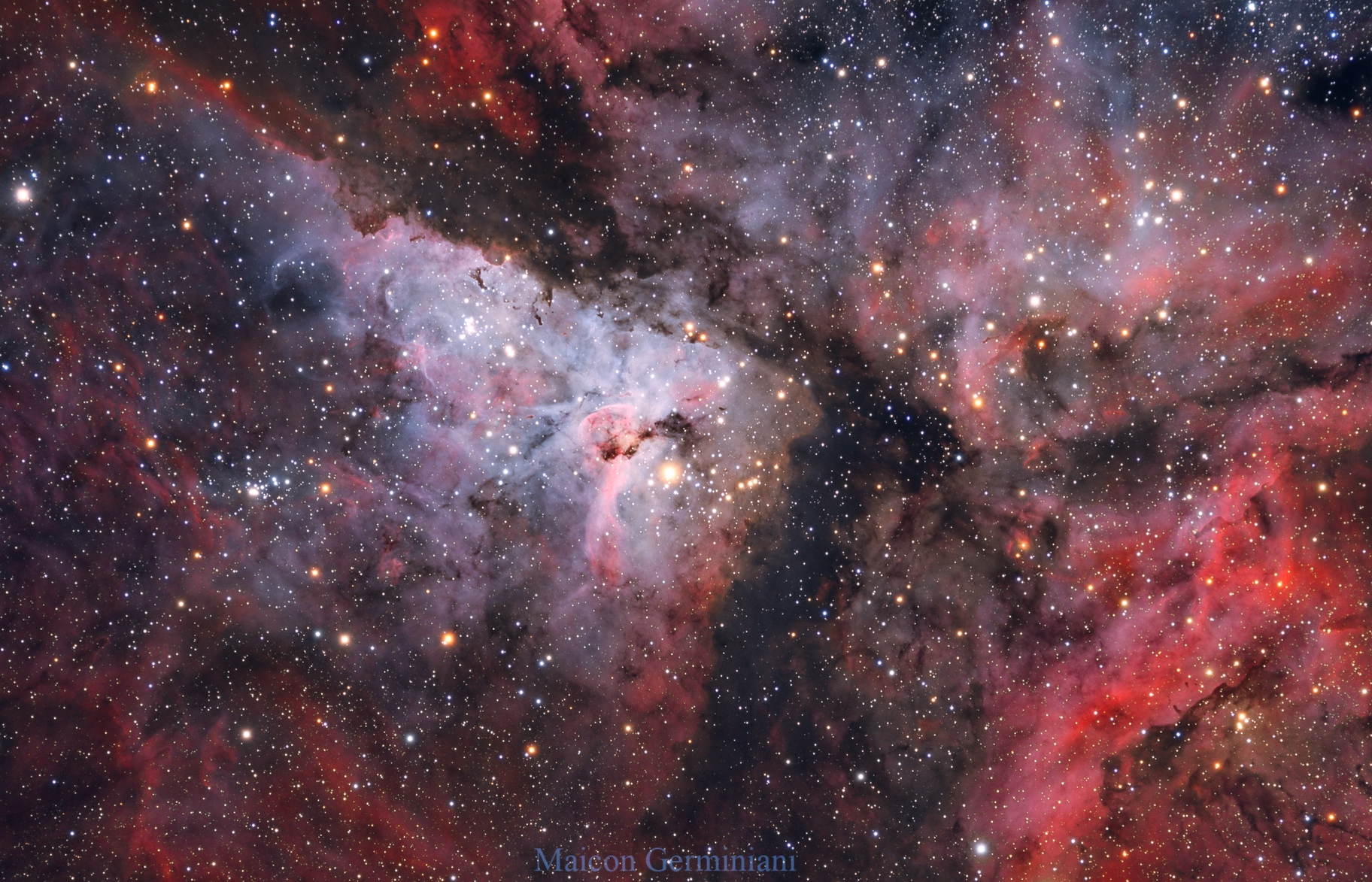 Total exposure 5 hours, TS115APO+ASI183MM Pro, LRGB combination.
Total exposure 5 hours, TS115APO+ASI183MM Pro, LRGB combination.Maicon told his story with passion words, he is very fantastic and honest. Hoping Maicon’s observatory will be built soon! I believe Maicon will be ready to shoot more exciting images from his observatory in the future.
Further more, this BLOG is not the end, it is just a beginning of a new plan of my work. We hope there will be more astrophotographers to share your story and amazing images. Let everyone knows about you and your works.
Welcome to john ZWO big family! Let’s talk with each other, Learn from each other, make improvement together!
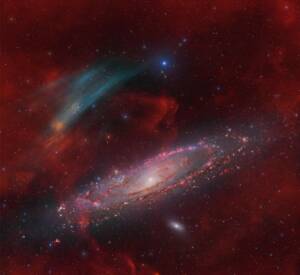
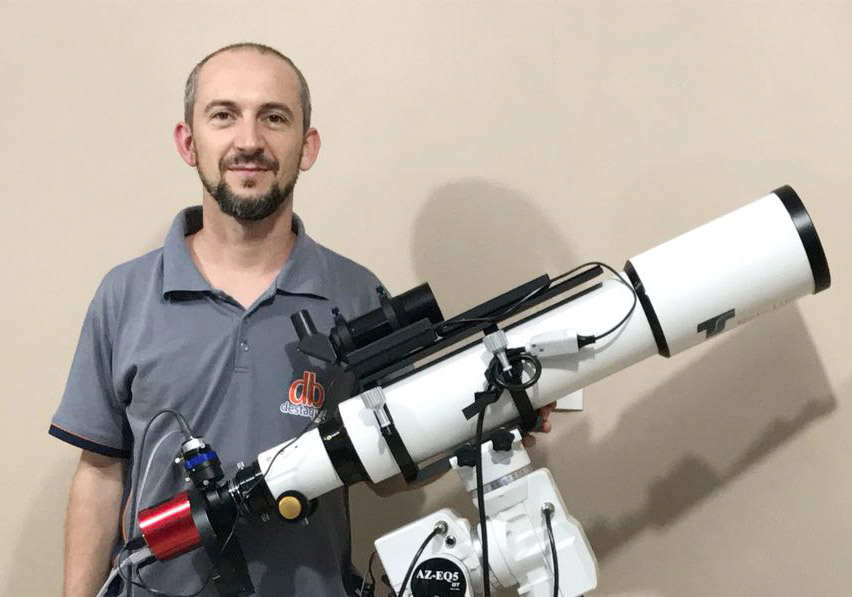
 Maicon Germiniani and his favorite equipments
Maicon Germiniani and his favorite equipments![]() Total exposure 5.0 hours, TS115APO+ASI1600MM-C, LRGB combination.
Total exposure 5.0 hours, TS115APO+ASI1600MM-C, LRGB combination. Total exposure 3.2 hours, TS115APO+ASI183MM Pro, Ha+GB combination.
Total exposure 3.2 hours, TS115APO+ASI183MM Pro, Ha+GB combination.
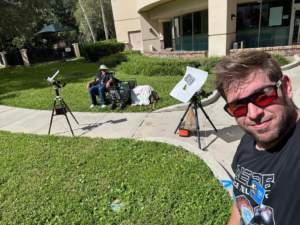

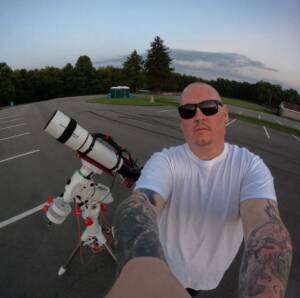
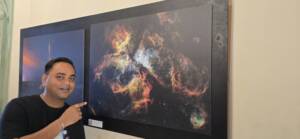
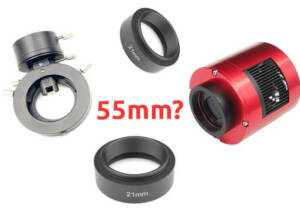
29 Comments
maicon germiniani
I was very happy and excited by the invitation. Many thanks for the opportunity, Sean. Clean skies at all !!
Sean Wang
Hi Maicon
You are welcome. When I saw your beautiful images, I have a strong willing to do this. 😀
Clear skies!
maicon germiniani
Thanks Sean. You have been a great friend. Thanks for the opportunity! 😉
Rafael Compassi
Very nice interview, my friend Germiniani! I love your images, they are incredibly detailed and crisp!
Sean Wang
Yes, Maicon’s images is really fantastic!
maicon germiniani
Thanks Rafael! i am very happy with your comment here!
Samuel Muller
Excellent interview Maicon. Certainly your images are among the best in Brazil, if not in the world. You are a pride for Brazilian astrophotography, not to mention, to our own state of Santa Catarina. Happy of being friends with you.
Sean Wang
Wow, you are in same city! that’s great!
maicon germiniani
Thanks my friend Samuel. Santa Catarina is our beatiful state!
Fernando Parmegiani
Great interview,
Maicon’s images are fantastic, i’m very proud to see all friends in Brazil gaining the deserved recognition all around the world.
Sean Wang
Hi Fernando, You live in Brazil too?
maicon germiniani
Thanks Fernando. I hope meet you soon. If possible at EBA my friend!
Eduardo Duarte Ziller Fagundes
Excellent and enlightening. I am fan of your sharp and beautiful work. Congrats.
Sean Wang
Thanks, Eduardo. I sent a email to Maicon, let him reply soon.
maicon germiniani
Thanks Eduardo!! I´m glad you like it!
Gilberto
Baita entrevista. É de tirar o chapeu para o Maicon, pois tem muita dedicação, profissionalismo, competencia, dedicação e inspira novas pessoas a serem como voce. Orgulho de uma pessoa como vc nessa area sendo do Brasil!!!
Sean Wang
Thanks, Gilberto. I sent a email to Maicon, let him reply soon.
maicon germiniani
Esse tipo de resposta é que faz a dedicação aumentar ainda mais Gilberto. Muito obrigado pelo comentário meu amigo. Abraços!
Robert Magno
Apesar da imensa competência na astrofotografia, Maicon é uma pessoa simples. Seu trabalho e dedicação são invejáveis. Está sempre disposto a ajudar aqueles que estão trilhando o caminho por qual ele já passou. Admiro muito seu trabalho. Parabéns pela excelente entrevista.
Sean Wang
Thanks, Robert. I sent a email to Maicon, let him reply soon.
maicon germiniani
Que é isso meu amigo. Já comentei no grupo que sou meio ” manteiga derretida”. Esses comentários me deixam muito feliz.
Jaitan Martini
Wow! Amazing images! I am really surprise! Congrats Maicon! =D
Sean Wang
I have same feeling when I saw his images! 😀
maicon germiniani
Thanks Jaitan my dear friend. 😉
Prem K
Maicon, excellent images! The colors are just wonderful! I have the TS115 refractor too, and interested in the 183MM-Pro camera. I have a few questions if you don’t mind answering: 1) Do you image at f/7 with the 183MM? 2) What gain and offset do you use for LRGB imaging (I’m planning to use this camera and scope for imaging some galaxies) 3) What sub-exposure length is mostly used? 4) Any special tips for calibration as this camera has amp glow. Thank you!
Maicon germiniani
Hello Prem! Thanks for words.
1-I use a reducer 0,79. The scope work in F5.5. I Will buy a flattener 1.0 for work in F7 for galáxy images.
2-i use the Set in HDR. 0 gain in my images.
3-Luminance and NarrowBand I capture with 300 seconds. For RGB i take subs of 60 seconds.
4-just dark frames. The only tip is capture with dithering. This câmera is very sensitive and this help in calibration.
Prem K
Thank you!
Sathyakumar Sharma
Hi Maicon, Incredible images. I have sent you a request on Facebook, do accept. I would love to discuss with you more on this subject.
Sean Wang
I will send your message to Maicon.